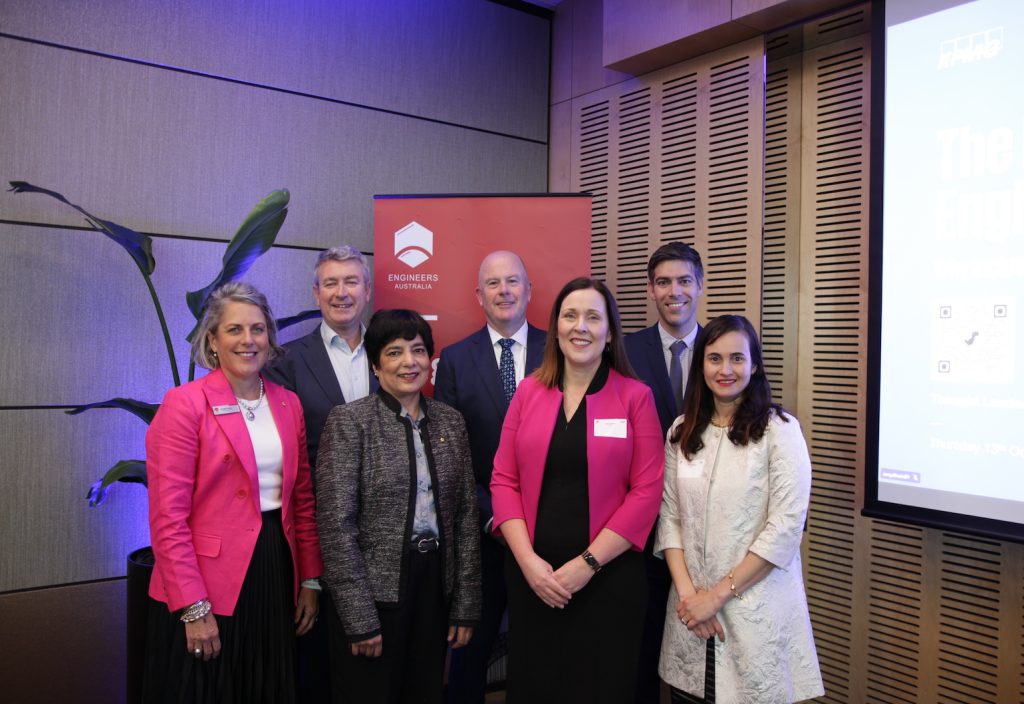The renewable energy transition is more than an opportunity to fuel the diversity engineering needs – that diversity will also power the transition.
That was the broad consensus from a heavy-hitting panel at last week’s Sydney instalment of Engineers Australia’s Thought Leaders Series: The future of engineering, why inclusion and diversity matter.
Hosted by KPMG, the panel event tackled how the engineering profession can best respond to both the scale and complexity of the challenges facing societies.
NSW Government Chief Data Scientist Dr Ian Oppermann FIEAust told the audience that despite concerted worldwide efforts, humanity would fall well short of the UN’s Sustainable Development Goals for 2030.
“All the easy stuff has been solved,” he said.
“There will never again be a molecule as simple as penicillin with the same blockbuster impact that penicillin. Everything we care about is complex.”
Embracing the complexity of those challenges, Oppermann said, was the only path forward, which meant doing things differently.
“Without diversity of thought and background and perspective and a whole range of different elements, we will not get there.”
The importance of culture
Engineers Australia CEO Romilly Madew AO HonFIEAust said it was illustrative that behind almost every corporate inefficiency or scandal lay a shortfall in culture.
“If you have just one type of people, then all you’re getting is samethink – you’re not challenging each other. And one type of people will just keep following one path,” she said.
Madew said the next generation of young people were being raised and schooled in an environment rich with gender, cultural and ethnic identities – and they were going to expect the same from their workplaces.
“A lot of cultures are very singular and our younger generation call BS on that, because they are very open minded,” she said.
“They have gone to school and university with a vast array of people. When they come into workforces without that, they are disappointed. And then you lose those incredibly talented people, because they’ll go find that sense of belonging in an organisation that does have a rich culture.”
Dr Marlene Kanga AO CPEng echoed this point, pointing to the fact that conversations about redressing the gender imbalance in engineering so often focus on attracting women to the profession and not retaining those already in it.
“If you needed to supply 100,000 litres of water to a small town and you’ve got a pipe that’s full of holes, what are you going to do?” she asked.
“Are you going to pump 1 million litres of water so that you get 100,000 at the other end? Or are you going to fix the pipe?”
Kanga said when it came to diversity, the pipe is culture and fixing it is the responsibility of leadership.
“So 16% of engineering graduates are women, but only half go into the workforce. And after 10 years, another half leave,” Kanga said.
“In the 50-plus age group, less than 1% [of engineers] are women. It’s a huge waste.”
There was nothing inherent to engineering that should make it male-dominated, highlighting that in countries as varied as Malaysia, Myanmar and Kuwait had gender-balanced engineering workforces.
“Australia is getting left behind, big time,” she said.
Diversity beyond gender
The pay gap, for both women and migrant engineers, is one of the causes of the leaky pipeline, Kanga said.
“Women just don’t ask for payrises as much as men, and if you are from a migrant background, you might be quieter. You might not speak up, you might not ask, you won’t get, so you get up and leave,” she said.
Sally Torgoman, KPMG Partner, Infrastructure, Assets and Place said the pay gap builds resentment.
“That resentment is really hard to cure. There are plenty of case studies around the industry that show rather than trying to solve a problem like that, they just leave, because they can’t actually contemplate being able to make a difference.”
Engineering for purpose
Kanga said engineering was a profession in which one could have a real impact and help create a better world, and this fact must be harnessed to attract the young talent – of all genders and backgrounds – that engineering needs to meet its challenges.
“Young people love the idea of purpose in engineering, and women in particular,” she said.
“If you ask a woman why they became an engineer, she will usually say to make a difference.
“If you want to change the world, you can actually do it with engineering. You have all the tools and all the skills.
Torgoman said this fact is why the renewable energy transition was so important for engineering.
“It’s an incredibly strong purpose that warms up the hearts of people, helping contribute to a better environment for our children,” she said.
“The second thing about the energy transition is that solving it involves such a broad range of problem solving.
“You have to be able to bring together a whole bunch of skills. You need to have chemical engineers with hydrogen working with electrical engineers for power systems, working with water engineers. So there is a diversity in the work that is very attractive to many.”
Versions of this event are being held in Perth and Canberra in the coming week. Learn more about upcoming events in EA’s Thought Leader series here.
